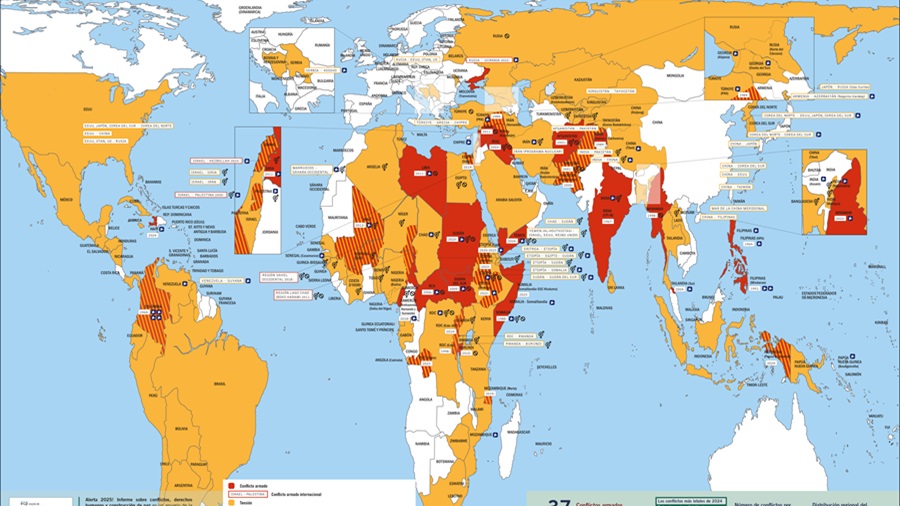The UAB School for a Culture of Peace (ECP) has published Alert! Report on Conflicts, Human Rights and Peacebuilding, a study that analyses the state of conflict and peacebuilding in the world in 2024. Among other findings, the yearbook reveals that 37 conflict contexts were accounted for, the highest number in the past 12 years. The document offers a comprehensive analysis based on data from the United Nations, international NGOs and research centres. It also identifies risk trends and opportunities for peace building.

Most of these conflicts were concentrated in Africa (17), Asia and the Pacific (10), and the Middle East (6), although Europe and the Americas also recorded two armed conflicts each. Two new scenarios now classified as armed conflicts stand out: Haiti and West Papua (Indonesia). In contrast, Sinai (Egypt) ceased to be considered as such at the end of the year. More than half of these conflicts (57%) were of high intensity, with severe humanitarian consequences.
One of the most alarming aspects of 2024 was the increase in the level of violence: 60% of the conflicts escalated in intensity, a trend that is in contrast to the 42% recorded in 2023 and 30% in 2022. Moreover, 73% of the conflicts were mainly caused by the questioning of the political, economic, social or ideological system of the states, a fact that evidences a deep institutional and governance crisis around the world.
The humanitarian consequences also worsened. According to UN data, in recent years there has been an increase in the number of civilians killed in armed conflicts. Moreover, the number of forcibly displaced people exceeded 122 million during the first six months of 2024, while the Internal Displacement Monitoring Centre estimates that by the end of the year this figure reached 83.4 million in active displacement situations.
Apart from armed conflicts, the report also notes an increase in tension scenarios: 116 cases, two more than in 2023. The most affected areas were again Africa (38) and Asia and the Pacific (31), although Europe (15), the Americas (20) and the Middle East (12) also experienced multiple episodes of tension. Thirty-eight percent of these tensions worsened compared to the previous year, consolidating an escalating trend.
The report emphasises the relationship between conflict and gender inequality. Seventy-nine percent of high-intensity conflicts occurred in countries with low or medium-low levels of gender equality. In addition, 76% of high-intensity conflicts took place in countries with discriminatory policies or laws against the LGTBIQ+ population.
A record increase in sexual violence in conflict is also reported: according to UN data, compared to 2022 and 2023 there was a 50% increase. In this context, the participation of women in peace processes is still very limited: only 9.6% of negotiators and 13.7% of mediators in the more than 50 processes analysed.
Despite this challenging panorama, this year's Alert! identifies five opportunities for peace: the Democratic Republic of Congo and Rwanda, Bangladesh, Bougainville (Papua New Guinea), Turkey and Syria. In parallel, it warns of four scenarios of increasing risk where complications have indeed occurred throughout 2025: the conflict in Sudan, tensions between India and Pakistan, the situation in the Taiwan Strait, and military escalation in Europe.






